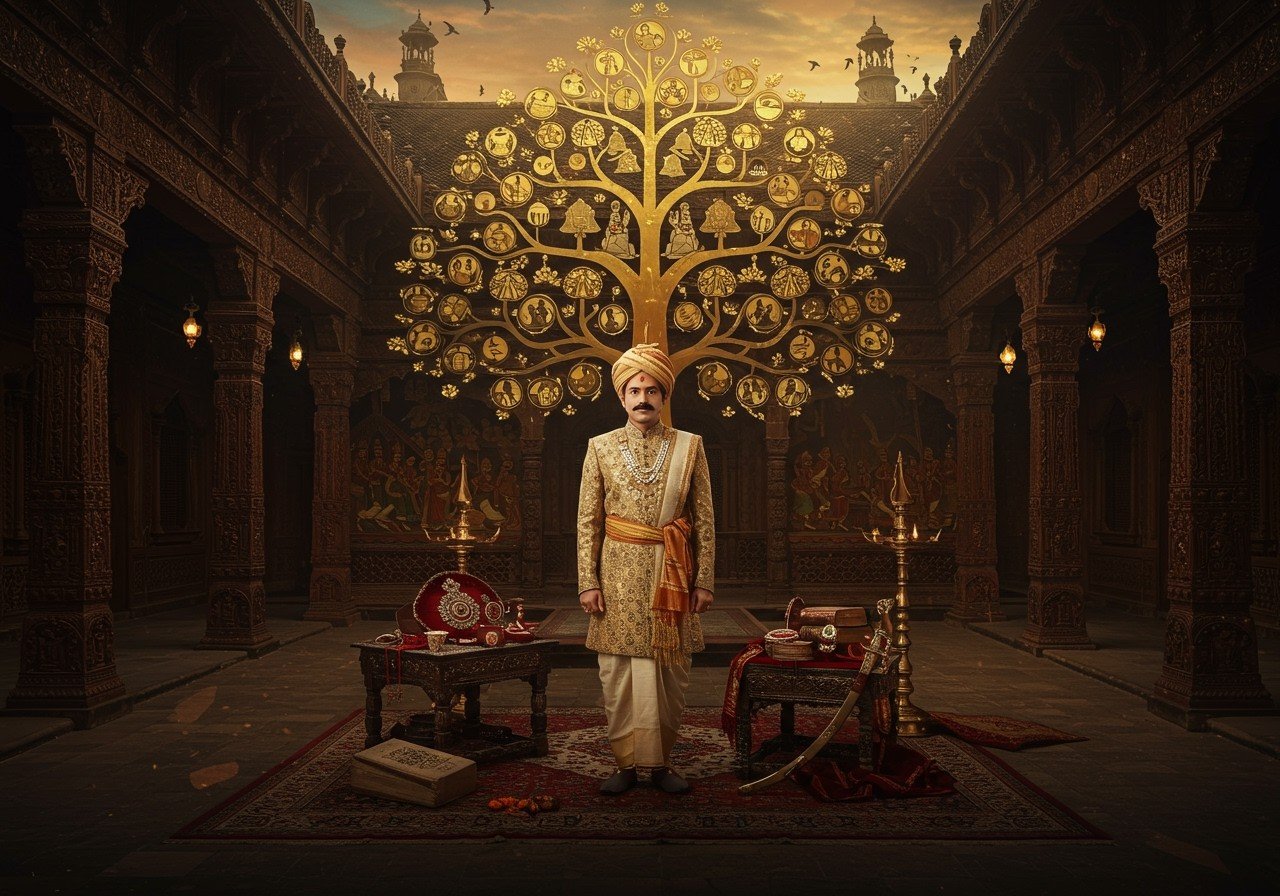
Delving into the family history of Purandar Singha is like opening a window into Assam’s rich past. This royal family, deeply rooted in the renowned Ahom dynasty, played a pivotal role in shaping the region’s identity for over six centuries. Understanding their lineage allows us to connect with Assam’s vibrant cultural and historical tapestry. For those seeking to connect with their own heritage, Poojn.in offers resources and guidance on traditional rituals and practices.
Purandar Singha: A Glimpse into His Reign
Purandar Singha stands as a significant figure in the Ahom dynasty. His time as a leader was marked by both internal struggles and external threats. He navigated these complexities with strength, striving to bring stability to his kingdom amidst Burmese invasions and political instability. His efforts left an undeniable mark on Assam’s cultural and political landscape, a testament to his leadership.
The Ahom Dynasty: A Legacy of Strength
Purandar Singha’s story is interwoven with the larger narrative of the Ahom dynasty. Founded by Sukaphaa in 1228, the dynasty’s origins lie in Mong Mao (present-day Shan State, Myanmar). Sukaphaa’s journey across the Patkai mountains marked the beginning of a kingdom that would flourish for nearly 600 years. This incredible legacy is a testament to the dynasty’s strength and resilience. Learn more about Assam’s spiritual heart and cultural heritage.
Sukaphaa’s Legacy: The Swargadeos
Sukaphaa, the first Swargadeo (meaning “Lord of the Heavens”), laid the foundation for a tradition of succession that emphasized direct descent. This meant that each ruler, including Purandar Singha, inherited a rich heritage directly connected to the dynasty’s founder. The Satghariya Ahom, the seven noble houses established by the third Ahom king Subinphaa (1281-1293), played an important part in the kingdom’s structure and governance. This system provided a framework for the aristocracy and added another layer of complexity to the dynasty’s history. Explore the journey through time of Assam’s rich cultural heritage.
The Royal Houses: Branches of Power
During the reign of Suhungmung (1497-1539), descendants of past kings were established in different regions, leading to the creation of seven royal houses: Saringiya, Tipamiya, Dihingiya, Samuguriya, Tungkhungiya, Parvatiya, and Namrupiya. Each house played a unique role in the kingdom’s expansion and consolidation of power. The Tungkhungiya line, founded by Gadadhar Singha (1681–1696), held the distinction of being the last ruling house of the Ahom kingdom. This intricate network of royal houses provides a fascinating insight into the dynamics of power and governance within the Ahom dynasty.
Family Ties: Shaping a Leader
Purandar Singha’s upbringing and leadership were deeply influenced by his family. His father, Brajanath Gohain, was a prominent figure whose contributions significantly impacted the kingdom. These early influences undoubtedly shaped Purandar Singha’s path as a leader. Strategic marital alliances further solidified Purandar Singha’s political standing. The women in his family, including his mother and other influential female figures, also played vital roles. Their wisdom and guidance were instrumental in shaping his development as a ruler. This emphasis on family bonds and influence adds a personal dimension to Purandar Singha’s story.
Continuing the Legacy: Purandar Singha’s Descendants
Purandar Singha’s descendants faced the daunting task of upholding the Ahom dynasty’s legacy. His sons navigated a complex political landscape, striving to maintain the family’s influence amidst numerous challenges. While the dynasty eventually met its decline due to various factors, including Burmese invasions and British annexation, the family’s contributions to the arts, architecture, and cultural practices of Assam continued to resonate. Their enduring legacy speaks to their resilience and dedication to their heritage.
Cultural and Historical Impact: A Lasting Legacy
The Ahom dynasty’s imprint on Assam’s cultural and historical landscape is profound and far-reaching. Their dedication to preserving traditions and fostering cultural practices left an enduring legacy that continues to enrich Assamese society. The socio-political fabric of Assam bears witness to the dynasty’s lasting influence. Historical accounts and folklore celebrate the contributions of Purandar Singha and his family, highlighting their significant role in shaping the region’s identity. Ensure your puja rituals are conducted with authenticity and respect using premium quality Mangalam Camphor from Poojn.in.
Relevance Today: Preserving the Past for the Future
Even today, the legacy of Purandar Singha’s family resonates deeply within Assam. Historical sites associated with the dynasty are carefully preserved and studied, attracting historians and genealogists eager to unravel the intricacies of Assam’s rich past. The Ahom dynasty’s historical records continue to fascinate and inform, offering valuable insights into a bygone era. In contemporary discussions, Purandar Singha’s lineage is honored for its enduring influence on Assamese culture and politics. Their story serves as a powerful reminder of the importance of preserving our history, ensuring that future generations can appreciate their cultural roots. Poojn.in provides a wide selection of traditional items to honor your heritage and conduct meaningful rituals.
Frequently Asked Questions about Purandar Singha’s Lineage
Many people wonder about Purandar Singha’s paternal lineage. His father was Brajnath Singha, a significant figure in his own right. People also ask about Purandar Singha’s children. He had a son, Sarbananda Singha, who carried the family legacy forward. And then there’s Dhananjoy Singha, Purandar Singha’s grandson, who also played a part in the family’s history.
The family’s history within the Ahom dynasty is a common point of interest. It’s a story deeply intertwined with Assam’s royal heritage. Purandar Singha’s personal contributions involved upholding the family’s royal status and maintaining their influence in the region. His descendants continued this tradition, participating in local governance and upholding cultural practices. The importance of Purandar Singha’s family history lies in its reflection of Assam’s rich cultural and historical tapestry, specifically within the context of its royal lineage. It’s a story that continues to resonate today.


